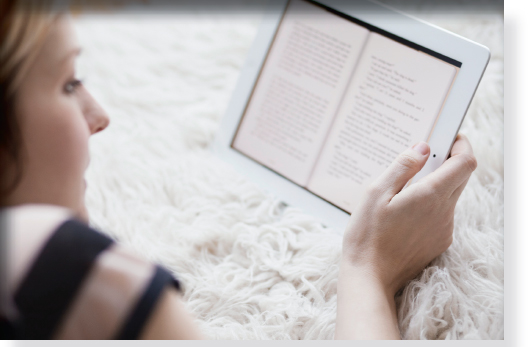techtip: EMBRACE THE E-BOOK
EMBRACE THE E-BOOK
|
In college we have textbooks, workbooks, and notebooks. While textbook publishers continue to make traditional books available, the same content is increasingly available in digital formats. In most courses today, students are required to access some course material digitally. For students who are used to buying or renting printed books from the college bookstore, this can be confusing. 
© W2 Photography/Corbis
|
The Problem You have heard about electronic books that are alternatives to traditional textbooks, but you aren’t sure what device to buy to read e-books. You really want to know the advantages and disadvantages that an e-book has when compared to a traditional book. The Fix Explore different platforms that deliver e-book content, and discover how reading with a digital reader differs from (and can even be better than) reading traditional books. |
How to Do It
|
Go to the library. Many libraries have tablets of different kinds. Ask a librarian to download a book in a variety of formats for you, so you can try different tablets out before choosing one to buy. Try the different media available. E-books give you access to the pages of the text, as well as video, audio, and Web content. PROS OF E-BOOKS
|
CONS OF E-BOOKS
GOOD TO KNOW Some electronic readers are no-frills, basic models designed to replicate the experience of reading a paper book. Others offer Web browsers, video, music, and thousands of free and for-purchase apps. Because most are Web-enabled, you can use them for other things like listening to music or audio books, checking e-mail, creating presentations, and writing papers. This increased functionality might be distracting but can also make you more productive. EXTRA STYLE POINTS: Price your textbooks in both the print and digital formats. Factoring in the cost of the e-reader, which format is cheaper? |